Abstract:
Canada is facing a more uncertain and turbulent world in which a robust, secure and vibrant research ecosystem will be more crucial than ever for building a prosperous, just and sustainable future. Successful societies in the 21st century increasingly rely on highly-qualified talent who can contribute to and provide access to the global pool of knowledge while driving innovation across all sectors. But how can Canadian scientists, scholars, and partners best play this increased role? What are society’s expectations and how can we work together across diverse industries, communities, and levels of government to support a better future for all through science, research and innovation? Join a panel of thought leaders to explore these and other questions about how we can build on, and enhance, the strengths of Canadian research to address Canada’s most pressing challenges and seize our greatest opportunities.
Summary of Conversations
The discussion centered on the value of research, innovation, and science in a changing world, emphasizing the importance of effectively communicating this value to the broader public. It was noted that Canadians may not fully grasp the benefits of research institutions and their impact on daily life. The conversation highlighted a shift in public perception toward a scarcity mindset, where investment in research needs to be justified against competing demands. The panel stressed the need to view universities as engines of intergenerational mobility, particularly through education and training, and adjust the way they communicate their mission.
Take Away Messages/ Current Status of Challenges:
Public perception of the value of research and innovation is not as strong as it once was, particularly outside of academic circles.
- There’s a growing scarcity mindset among Canadians, leading to increased competition for public funding.
- Universities are often seen primarily through their education and training mission, potentially overshadowing their research and innovation contributions.
- Policy incentives may inadvertently push institutions towards homogenization, hindering their ability to leverage unique strengths.
- A potential anti-elite sentiment exists, and universities need to demonstrate their value to the broader population.
- Geopolitical uncertainties and potential trade conflicts pose existential threats that require unified action.
- There is a need for transparency and open communication regarding challenges faced by universities and how they manage pluralism and diversity on campus.
- Immigration policies and international student programs are under scrutiny and need to be reframed to emphasize their positive contributions.
Recommendations/Next Steps:
Proactively communicate the value proposition of research and innovation in concrete, tangible ways that resonate with the average Canadian.
- Emphasize the role of universities in fostering intergenerational mobility and ensuring future success, particularly for young Canadians.
- Adjust the way the sector thinks and talks about itself, balancing research and innovation with the importance of education and training.
- Policymakers should design programs that avoid perverse incentives and encourage institutions to leverage their unique strengths.
- Prioritize transparency and open communication to address public skepticism and build trust in university decision-making.
- Engage with government and intelligence agencies to ensure research partnerships align with national security interests.
- Reframe the narrative surrounding international students to highlight their contributions to Canadian society and the economy.
- Focus on frontier research and technological breakthroughs to communicate exciting opportunities that can lead to a better future.
* This summary has been generated with the assistance of AI tools

